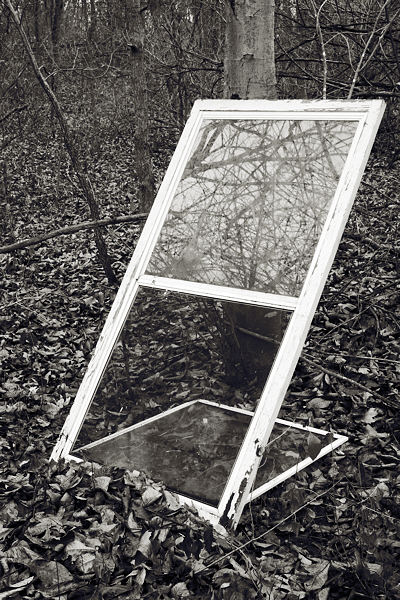Posted by Steve Durbin on March 18th, 2008
Francis Bacon wrote: “There is no excellent beauty that hath not some strangeness in the proportion.” Just recently, by one of those common coincidences, I’ve seen this idea compellingly expressed in different contexts, though both related to art. One is the passage below from a Laurie Fendrich interview, which I had occasion to quote in a comment elsewhere.
The beauty in abstraction comes when abstract painters create marks, shapes, forms, and colors that tap into unseen but universal, psychologically beautiful forms and shapes. The marks and colors, since they range so widely in painting, bring to abstract paintings the poignancy of the individuality of each human being. I said I’m almost a complete Platonist, but I’m not a complete Platonist. I think deviation, or falling away from perfect form, is what makes something profoundly beautiful. Perfect beauty is different from profound beauty; the latter is always partly tragic and has something wrong with it, always, and without exception. The “something wrong” part is the handedness, or the individual way a painter paints, which points to the fleetingness of our lives. But it’s really simpler—beauty either is or isn’t, once a painting is done. If it knocks the socks off someone who sees it, and that someone is a deep and sensitive person, that’s the test. Period.
more… »
Posted by Steve Durbin on March 4th, 2008
Seems like everybody is making a book these days. Lower prices and improvements in quality have made publish-on-demand an intriguing proposition. Reviews are mixed, but I’ve reached the point where I’m interested in giving it a try. Since I tend to work in projects, there are several bodies of work that are candidates for books. I’ve decided to look first at the smallish number of images in the set I’ve called Winter Water, some of which have been placed on my not up to date web site, or discussed here and there on A&P.
A book is necessarily presented as a linear sequence of pages, though a reader (is it still a reader if there are only photographs?) may not follow that order. Nevertheless, assuming one image per page for maximum resolution, it’s an interesting question to consider what sequence might work best. It’s akin to hanging pictures in an exhibit. As I am neither illustrating a narrative nor providing a guide to Pine Creek Falls in Paradise Valley in late November, I am not bound by the order in which the photographs were made or the physical layout of the falls. Considerations include interesting pictorial relationships, pacing, and the overall impression desired. None of these is at all well-defined, and I come up with a different order every time I sit down to it. I make no claims for the latest version shown below; in fact, I’m asking for your help.
more… »
Posted by Steve Durbin on February 29th, 2008

A while ago I posted some first thoughts on personal psychogeography, including the germ of a project involving photography and writing. I’m grateful to comments (from Martha and Lucy) for pointing me to significant related work by Richard Long, Hamish Fulton (beware annoying Flash), and Francesco Careri. These have been helpful to me in formulating my own project, which is, in fact, very different. I am approaching the idea — call it a psychogeographic study — primarily as a photographer, i.e. one interested in making photographs. In contrast, Long and Fulton (and the architect Careri, from the little I know) consider their photographs quite secondary: the walk itself is the artwork.
more… »
Posted by Steve Durbin on February 14th, 2008
When it comes to created work, most artists have little choice but to move on once they’ve produced a piece (admittedly, it can sometimes be difficult to identify or reach an endpoint). Photographers are blessed or cursed with a real choice. Probably most, having once achieved a satisfactory rendition of an image, are willing to leave it there. From that point, with digital technology, endless identical copies can be made (I’m ignoring printing technicalities, a different subject altogether). In the non-digital world of printing from negatives, a new print request may entail a repeat visit to the darkroom, but careful photographers certainly have notes on paper choice, development time, and any dodging or burning they might have settled on. Reproducibility is one of photography’s greatest strengths, despite the headaches and posturing over pricing that it may induce.

more… »
Posted by Steve Durbin on February 10th, 2008
Thinking as an artist, of course not. Thinking as a scientist, of course yes. This certainly reflects a difference in approach, but I don’t think there’s a true disagreement. Rather, the response depends mostly on how the question is interpreted: does my moon mean what the moon means to me or is it the moon in the sky that I see.

Somewhere between physical stimulus and mental concept lies perception. Does how I perceive the moon depend on whether I am German or Spanish, male or female? A fascinating (and amazingly readable) paper by Lera Boroditsky, Lauren Schmidt, and Webb Phillips (Dept. of Psychology, Stanford) suggests that it might. The authors didn’t study the effect of biological gender, but I suspect it could play a role because the language/culture seems to be related to grammatical gender. In German der Mond is masculine, while in Spanish la luna is feminine.
more… »
Posted by Steve Durbin on February 5th, 2008
Psychogeography: the word conjures for me. I came across it a scant few weeks ago, and immediately it brought some coherence to many thoughts that have clattered around my mind for a while. It was like finding the framing for a photograph that brings the picture elements into good relationship.
more… »
Posted by Steve Durbin on January 22nd, 2008
According to the saying, it’s either God or the Devil in the details. Either way, there seems to be an inherent fascination with closely observing the finest details in a subject. In museums, given opportunity, people will walk right up to a painting or photograph to examine it as closely as possible. This may happen even if the subject in itself is not so compelling. But when it is…

more… »




